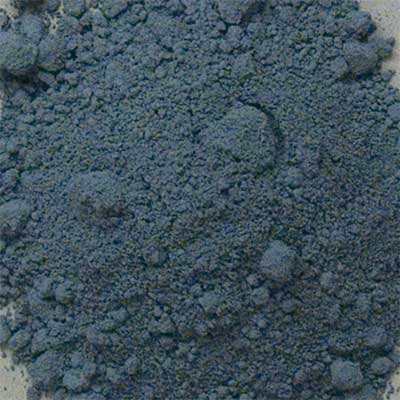Riebeckite 4 oz vol
$14.50
Out of stock
SKU
410-2210
Riebeckite is a dark blue mineral from deposits in Krivoi Rog, Ukraine. It has been identified on wall paintings in Late Neolithic and Bronze Age Europe and the eastern Mediterranean.
Riebeckite is a dark blue mineral from deposits in Krivoi Rog, Ukraine. It has been identified on wall paintings in Late Neolithic and Bronze Age Europe and the eastern Mediterranean.
Origin and History
Riebeckite is a not well-known dark blue mineral although most people have probably seen stones that at one time were composed of riebeckite crystals. The mineral was named after a famous 18th-century German explorer and mineralogist, Emil Riebeck (1853-1885). The mineral was identified on wall paintings on Crete (Knossos, Ayia Triada, Amnissos), mainland Greece (Mycenae) and Cyprus (Akrotiri and Thera), and other works of art since Late Neolithic times (at least the 4th millennium B.C.E.) and the Early Bronze Age, where its was used alone and in combination with Egyptian blue (a synthetic blue pigment).
Source
Riebeckite is a natural silicate mineral belonging to the amphibole group with notable occurrences in Soqotra, South Yemen; Transvaal, South Africa; Schirmeck, Germany; Langesund, Norway; Krivoi Rog, Ukraine; Western Australia; Scotland; Madagascar; and the USA. Rublev riebeckite pigment is made from deposits in Krivoi Rog, Ukraine. Some forms of riebeckite are asbestiform and can be used as asbestos. Asbestos has many industrial uses despite some health risks and is made of different minerals all with a fibrous habit. Riebeckite has a variety called “crocidolite” that is asbestiform in habit, which is the mineral variety of the Rublev pigment.
Permanence and Compatibility
Riebeckite is not affected by light and is stable under normal atmosphere. It is resistant to alkalis and hence can be used in fresco and casein.
Oil Absorption and Grinding
Riebeckite absorbs a moderate amount of oil (20 g oil per 100 g of pigment).
Toxicity
Riebeckite is an asbestiform mineral and is rated toxic, especially with prolonged exposure by inhalation. It is not considered toxic in contact with the skin. Asbestos is a known carcinogen. Care should be used in handling the dry powder pigment to avoid breathing the dust. A NIOSH-certified dust mask should be worn.

Pigment: Riebeckite
| Pigment Names | |
| Synonyms: | Abriachanit, Abriachanita, Orthoriebeckit, Orthoriebeckita, Orthoriebeckite, Osanit, Osanita, Osanite, Osannit, Osannita, Osannite, Riebeckit, Riebeckita |
| Alternate Names: | English: blue amphibole, blue asbestos, blue Cape asbestos, Crocidolite (variety) |
Origin and History
Riebeckite is a not well-known dark blue mineral although most people have probably seen stones that at one time were composed of riebeckite crystals. The mineral was named after a famous 18th-century German explorer and mineralogist, Emil Riebeck (1853-1885). The mineral was identified on wall paintings on Crete (Knossos, Ayia Triada, Amnissos), mainland Greece (Mycenae) and Cyprus (Akrotiri and Thera), and other works of art since Late Neolithic times (at least the 4th millennium B.C.E.) and the Early Bronze Age, where its was used alone and in combination with Egyptian blue (a synthetic blue pigment).
Source
Riebeckite is a natural silicate mineral belonging to the amphibole group with notable occurrences in Soqotra, South Yemen; Transvaal, South Africa; Schirmeck, Germany; Langesund, Norway; Krivoi Rog, Ukraine; Western Australia; Scotland; Madagascar; and the USA. Rublev riebeckite pigment is made from deposits in Krivoi Rog, Ukraine. Some forms of riebeckite are asbestiform and can be used as asbestos. Asbestos has many industrial uses despite some health risks and is made of different minerals all with a fibrous habit. Riebeckite has a variety called “crocidolite” that is asbestiform in habit, which is the mineral variety of the Rublev pigment.
Permanence and Compatibility
Riebeckite is not affected by light and is stable under normal atmosphere. It is resistant to alkalis and hence can be used in fresco and casein.
Oil Absorption and Grinding
Riebeckite absorbs a moderate amount of oil (20 g oil per 100 g of pigment).
Toxicity
Riebeckite is an asbestiform mineral and is rated toxic, especially with prolonged exposure by inhalation. It is not considered toxic in contact with the skin. Asbestos is a known carcinogen. Care should be used in handling the dry powder pigment to avoid breathing the dust. A NIOSH-certified dust mask should be worn.

Pigment: Riebeckite
| Pigment Information | ||
| Color: | Dark Blue | |
| Colour Index: | - | |
| Chemical Name: | Sodium Iron Magnesium Silicate Hydroxide | |
| Chemical Formula: | Na2(Fe, Mg)3Fe2Si8O22(OH)2 | |
| ASTM Lightfastness Rating | ||
| Acrylic: | Not Tested | |
| Oil: | Not Tested | |
| Watercolor: | Not Tested | |
| Properties | ||
| Specific Gravity: | 3.2–3.4 (3.2 g/cm3) | |
| Hardness: | 5–6 | |
| Refractive Index: | a=1.68-1.698, b=1.683-1.7, g=1.685-1.706 | |
| Oil Absorption: | 20 g oil/100 g pigment | |
| SKU | 410-2210 |
|---|---|
| Brand | Rublev Colours |
| Vendor | Natural Pigments |
| Processing Time | Usually ships the next business day. |
| Size | 4 oz vol jar |
| Color | Blue |
California Proposition 65: This product contains a chemical known to the State of California to cause cancer and birth defects or other reproductive harm.



